Welcome to Rose Bank Gardens in Great Malvern, gateway to the hills
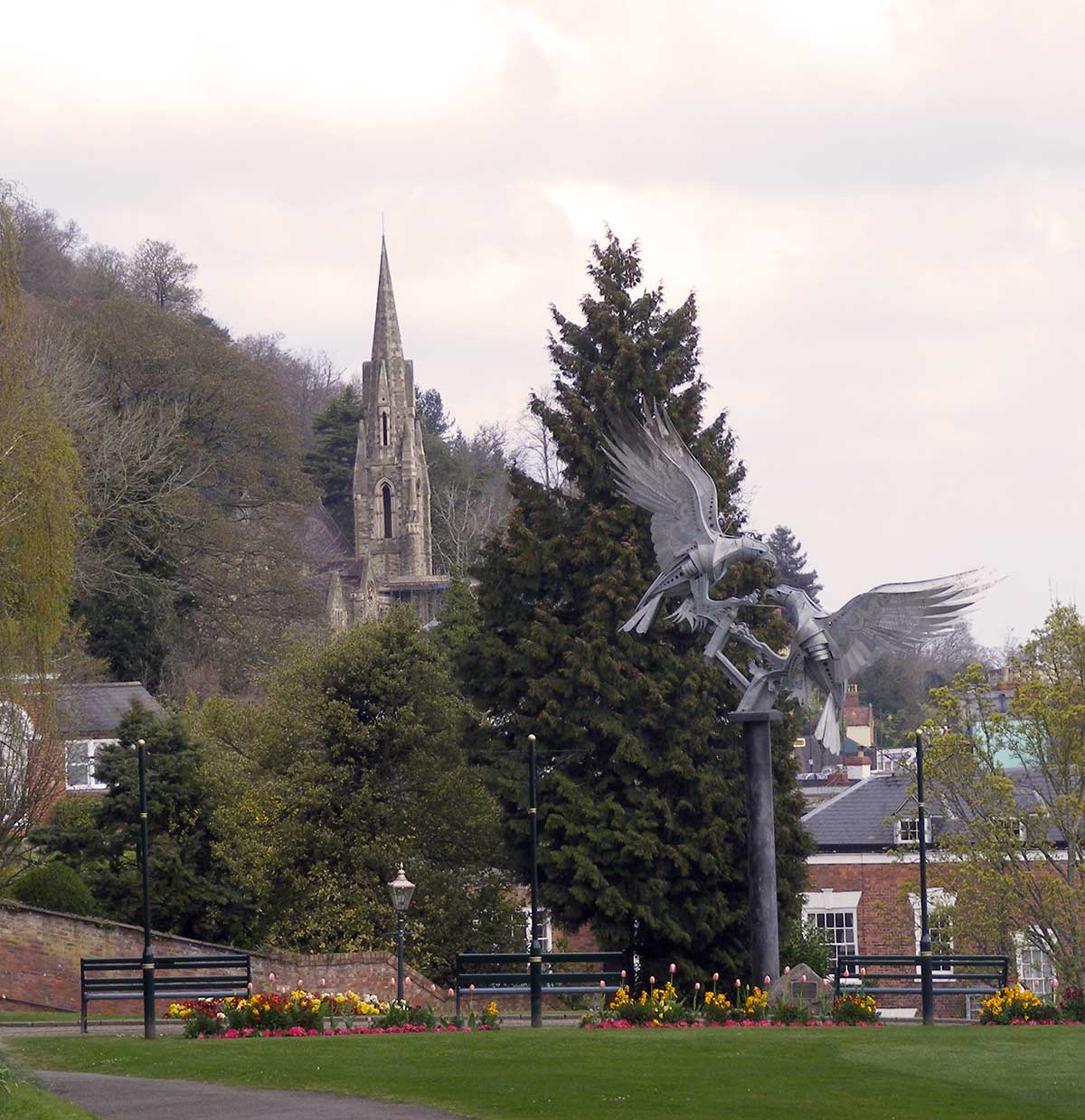 Contents Contents
History
The gardens today
Sculptures
The ninety nine steps
The southern end
St Ann's Well
The Worcestershire Beacon
A house named Rose Bank appears in the 1841 census of
Great Malvern. It was the home of Mary Ann Wilmot the widow of Sir Robert
Wilmot 2nd Baronet (1753-1834) of Osmaston
Hall in Derbyshire. The Wilmot family lived at Rose Bank from about 1840
to 1880. Lieutenant General Eardley Nicholas Wilmot of Rose Bank was named
as a magistrate in the 1873 Post Office Directory. In 1826 his sister Mary
Ann married General Sir Richard
Church at Worthing. The 1871 census confirms she was the wife of General
R Church KCH who was then in the service of the King of Greece.
The 1901 and 1911 census recorded Rose Bank occupied by
George Silas Guy born about 1837 and his second wife Hannah. George's
occupation was recorded as 'managing director of an iron and steel tube
manufacturory'. George Guy died in 1912.
Rose Bank House, which had double fronted bowed windows
offering panoramic views over Worcestershire, and its large gardens were purchased by local
benefactor
Charles
William Dyson Perrins in 1918 and gifted as an amenity to the town of Great
Malvern in Worcestershire, UK.
Rose Bank was used by the Womens Royal Voluntary Service
(WRVS) during WWII, but, according to reports, the house fell into decay and
was demolished in 1959, a year after Dyson's death.
Rose Bank Gardens, situated above Belle Vue Terrace, to
the south of the Mount Pleasant Hotel remain an attractive place to walk,
rest, and
access footpaths onto the hills.
A notable feature is a sculpture of two buzzards in
flight, installed in 2012, to mark
Queen Elizabeth II's Diamond Jubilee.
Nearby are Tourist Information Displays (see outline below).

The magnificent sculpture of the buzzards (see photo below) was
created by Polish sculptor Walenty Pytel who oversaw the installation.
The sculpture was funded by Malvern Town Council, Malvern Hills District
Council and private donations.
The Malvern Gazette reported it is not the first time that Mr Pytel has
made a sculpture to mark a royal jubilee. In 1977 a Silver Jubilee
commemorative fountain depicting Great Britainís heraldic beasts was
unveiled outside the Houses of Parliament.
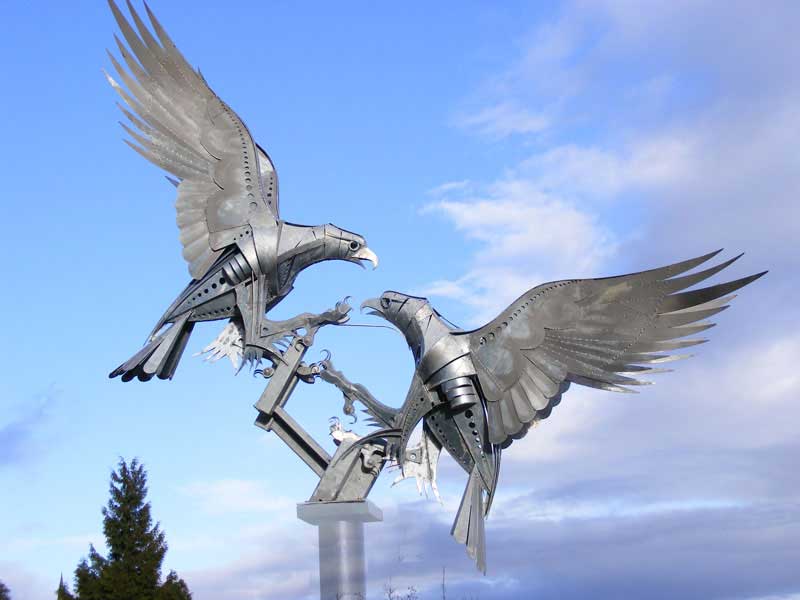
Sculpture of Buzzards
A plaque below the sculpture records:
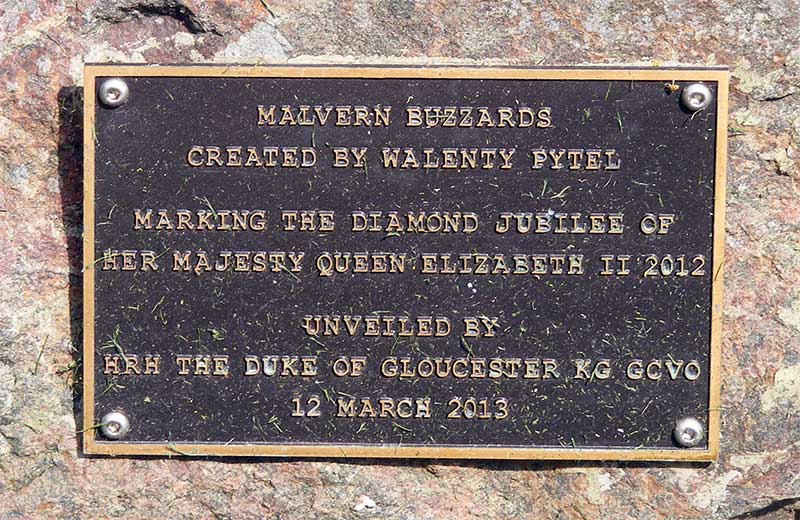 Malvern
Buzzards Malvern
Buzzards
Created by Walenty Pytel
Marking the Diamond Jubilee of
Her Majesty Queen Elizabeth II 2012
Unveiled by HRH The Duke of Gloucester KC GCVO
12th March 2013
In 2017 another sculpture emerged amongst the bushes in
the gardens, a few yards south of the Buzzards - an impression of a skylark. Ask
your children to search for it if you visit.
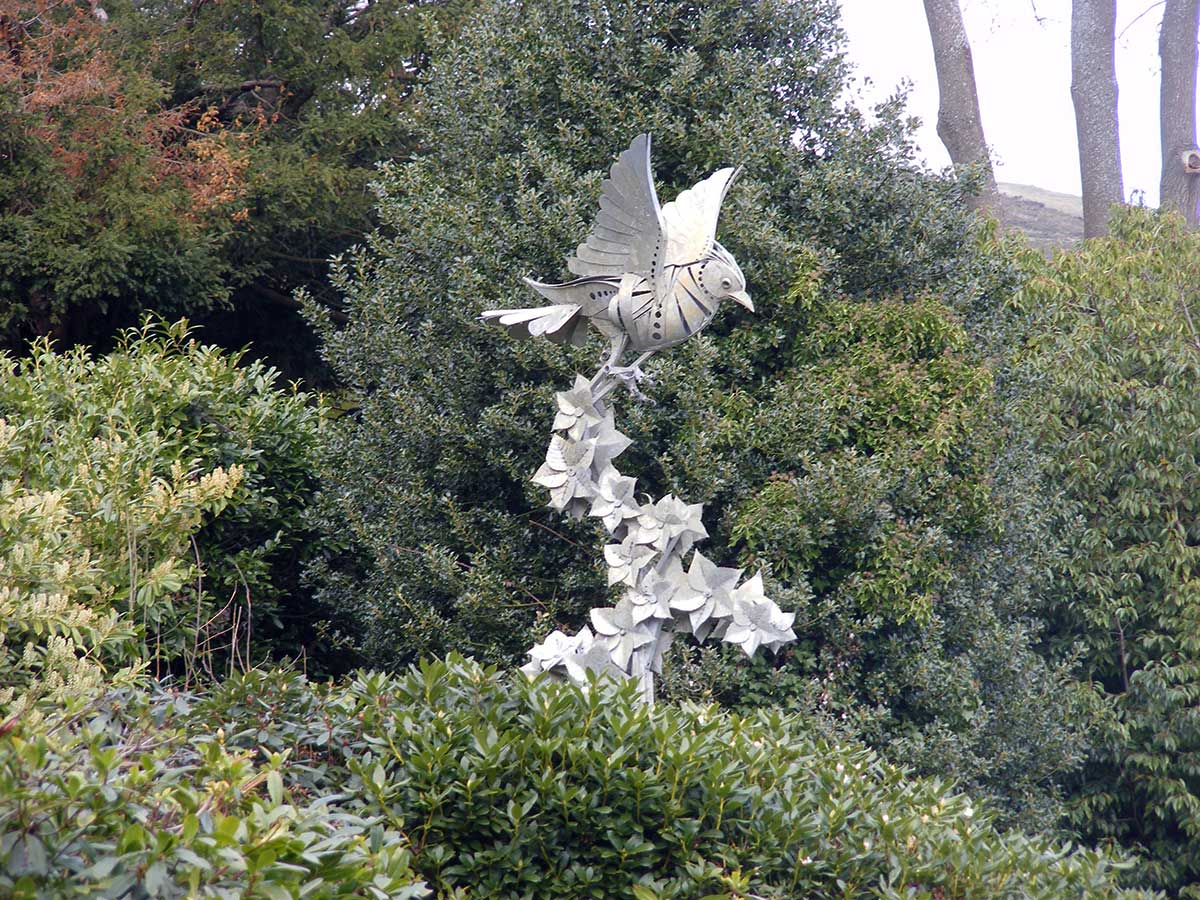
Sculpture of Skylark
The idea of the skylark, as with the buzzards, came from
Peter Smith, artistic director of the Autumn in Malvern Festival, which has
funded the new work. Mr Smith said:
The title of the new sculpture is The Lark Ascending,
inspired by the poem of George Meredith and the music of Vaughan Williams.
The photo below shows the view from Rose Bank Gardens across the Severn
Valley. In the foreground can be seen the Tourist Information Centre and
Post Office.
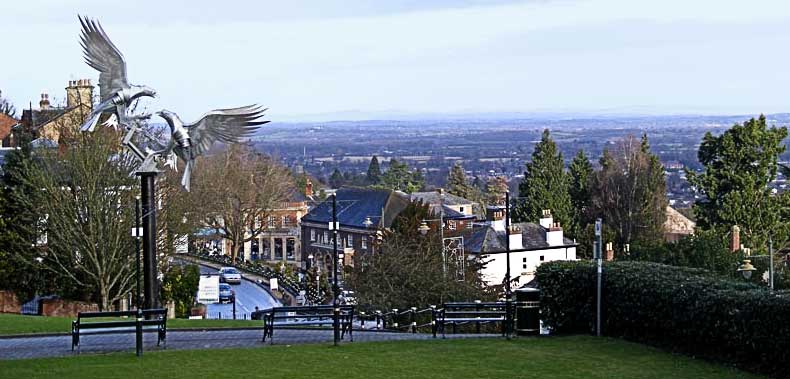
Looking NE from Rose Bank Gardens
Rose Bank Gardens extend over several levels with many
zig zag paths to explore; the gardens are at their best in the summer when plants are in bloom
and the ground is dry.
If you follow the path by the wall westwards from the
entrance off Belle Vue Terrace, you will reach the ninety nine steps
leading to a footpath up to St Ann's Well.
At the foot of the steps there is a small plaque which records:
CS Lewis 1898 - 1963, Scholar and Author
Cherbourg House School Malvern 1911 - 1913
Malvern College 1913 - 1914
The Malvern Hills reminded Lewis of the Mourne
Mountains at home in Ireland.
A gas lamp appears in his story, The Lion the Witch and the Wardrobe.
At Magdalen College, Oxford, Lewis tutored George Sayer 1914 - 2005 who became a close friend and Head of English at Malvern College. Lewis, like JRR Tolkien, often visited him in Alexandra Rd, Malvern Link.
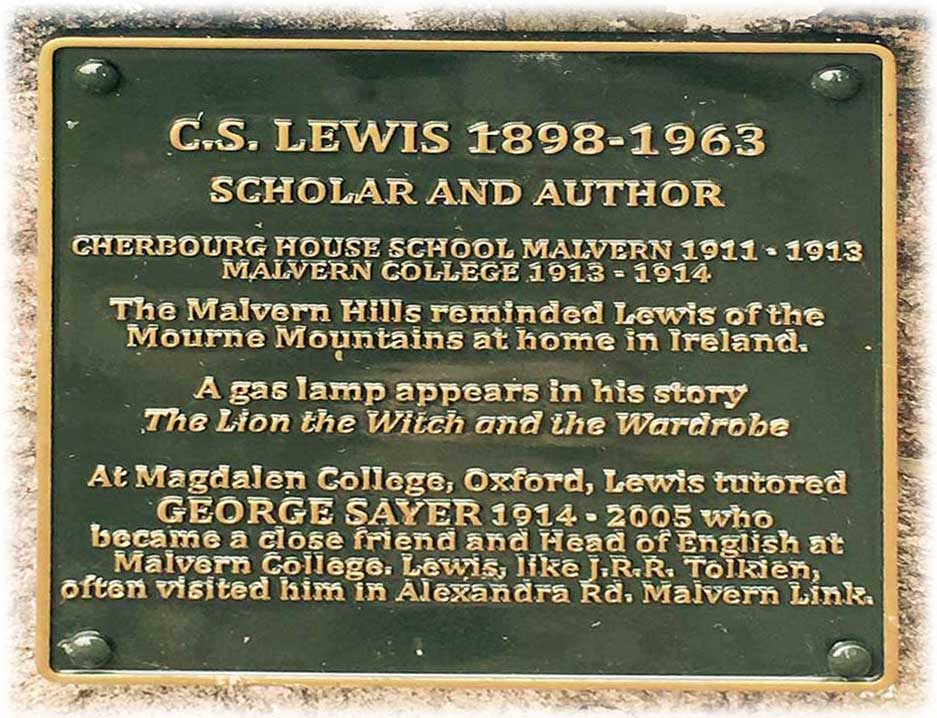
Photo of plaque at foot of the 99 steps
After you have rested at the top of the 99 steps bear right a few steps into Foley Terrace, joining St Ann's Road. At this
point you will see a sign pointing
the way up a steep zig zag footpath to St Ann's Well where there is a cafe.
Alternatively a few yards further on you can turn left up
another path onto the Malvern Hills signposted
Happy Valley.
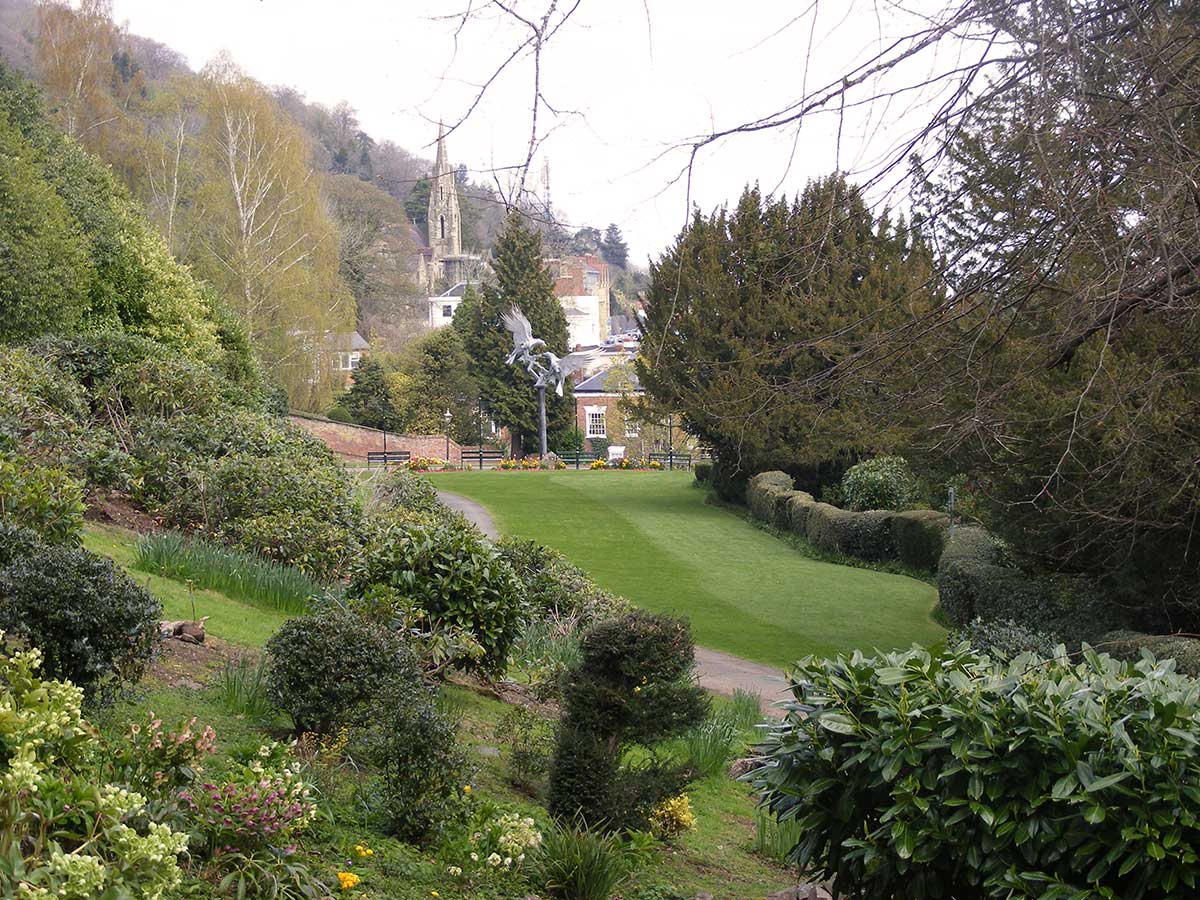
Rose Bank Gardens viewed from the south
At the southern end of Rose Bank Gardens there is a gate
leading upwards through shaded woodland to Foley Terrace.
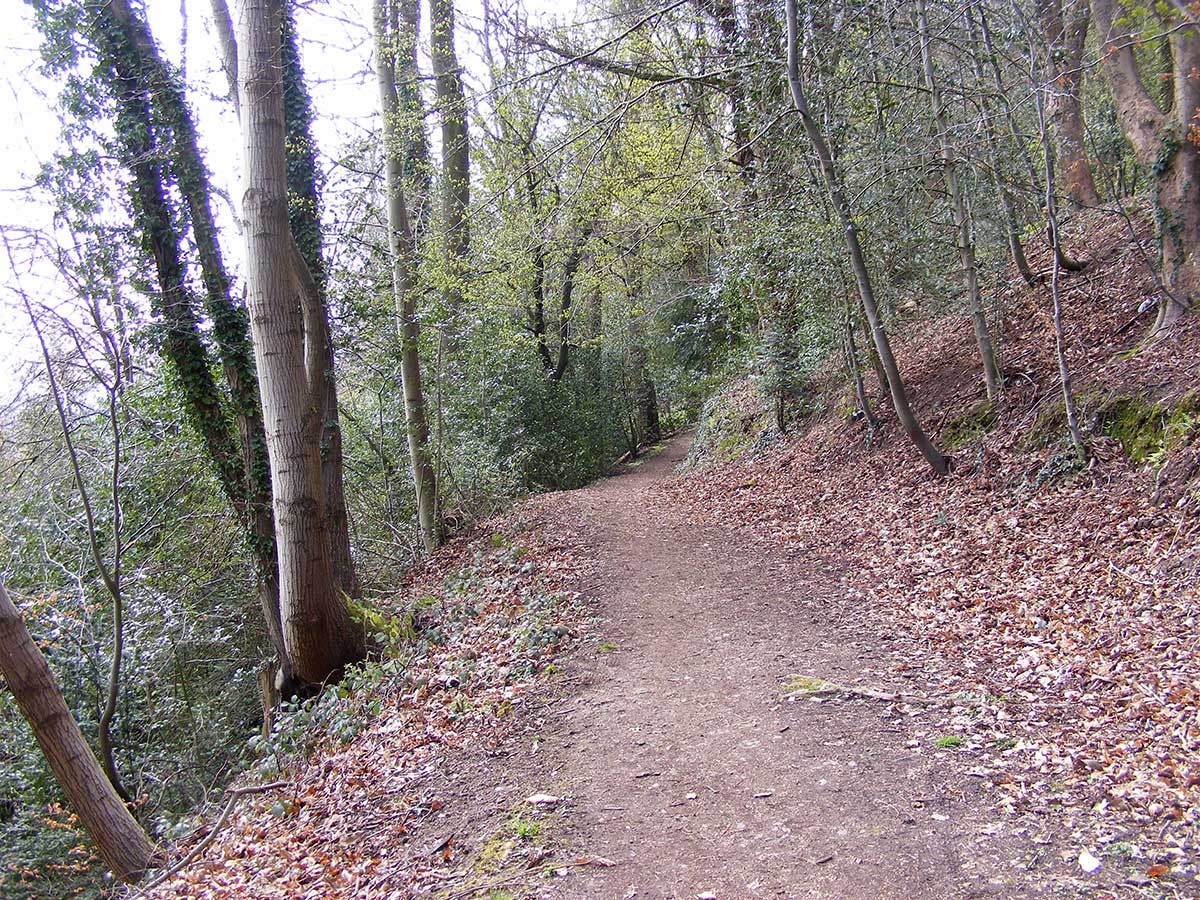
Woodland path to Foley Terrace
At the top you can either turn left to follow Foley
Terrace to the main road running up to the Wyche Cutting or turn right
towards St Ann's Road and thence down past the Red Lion to Belle Vue
Terrace.
From the top of Rose Bank Gardens it is a steep walk up to
St Ann's Well but well worth the effort. Probably not a route to be taken by
the infirm, though those with electrically powered mobility scooters and
good brakes might be able to make the climb.
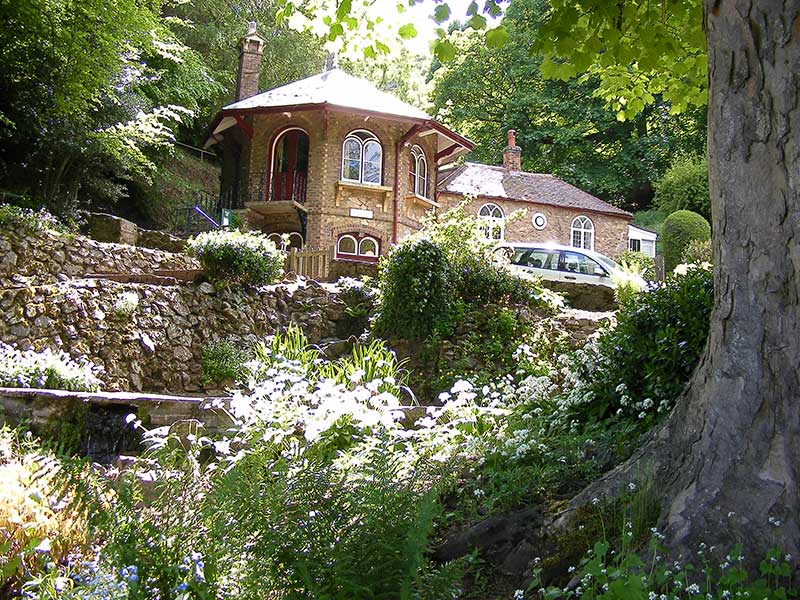
St Ann's Well
At St Ann's Well you will find seating and refreshments.
See St Ann's Well website
for opening times.
If you manage the climb you might find it amazing that
the Victorian Water Cure doctors
encouraged their patients to walk up to St Ann's Well and back before
breakfast. At least at that time of day the weather would be cool!
From the cafe at St Ann's Well footpaths branch out onto the
Malvern Hills, and
you can walk up to the highest point known as the Worcestershire Beacon.
There was once a cafe here which burnt down in 1989. The
Malvern Hills Conservators hoped to replace it seeking permission in the
1995 Malvern Hills Act, but this was refused by the House of Lords who felt
that needs could be met by the cafe at St Ann's Well.
At the Worcestershire Beacon, situated above
Rose Bank Gardens,
there is a Toposcope which was installed in memory of the Diamond Jubilee of
Queen Elizabeth II's great great grandmother, Queen Victoria, in 1897.
The Toposcope now bears a copy of the original metal
plate showing the landscape surrounding the hills, protected by a circular
glass disk, which had an inscription on the top
reading 'The earth is the Lord's and the fullness thereof'. The original was
stolen in the year 2000, but was later recovered.
Click
for photo of the Toposcope on Geograph
Click
for photo of the top of the Toposcope
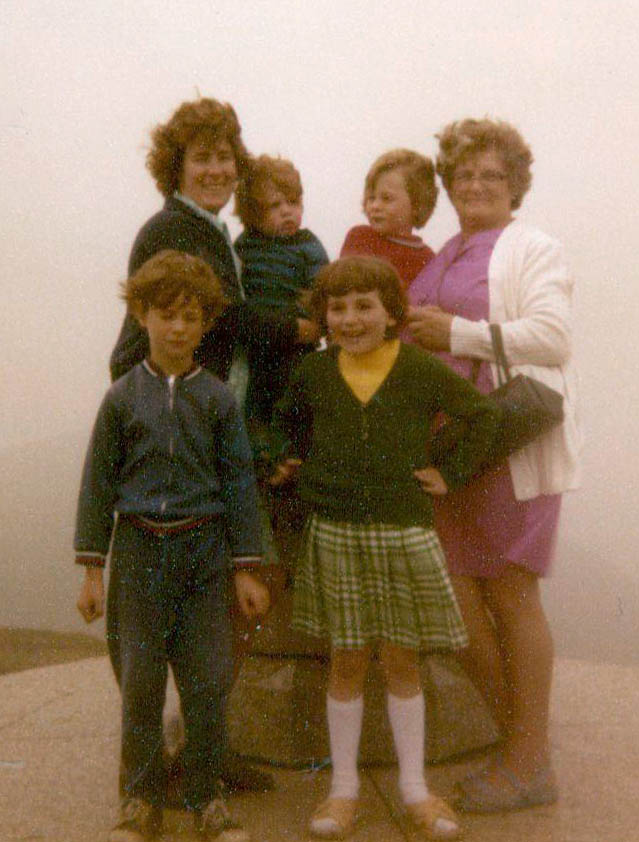
A windy day at the Worcestershire Beacon in 1978
Click to go to Malvern Hills Trust page for more information about walking
on the Malvern Hills.

Back to top
|

